Moto X Review
by Brian Klug on August 26, 2013 1:30 PM EST- Posted in
- Smartphones
- Qualcomm
- MSM8960
- Motorola
- Android
- Mobile
- Android 4.2
- Moto X
Camera Analysis - One Clear Pixel
The camera on Moto X is an interesting and unique thing to talk about. Motorola has completely changed its camera interface around dramatically, added an interesting camera activation “flick” gesture, and the camera system itself is likewise a unique one, as it is the first to include a clear pixel in its color filter array.
Let’s start with the UI and activation changes. Previously, Motorola had a relatively pragmatic camera interface with an expandable menu bar at the bottom, some breakout options, and on screen capture button. I have to be honest and say that although I lived with it, I was never a huge fan of the interface. The Moto X does away with all of it completely, and corrects towards a very simple interface and interaction pattern catered to users who want something that just takes pictures without any fussing with settings. This is another place where the Moto X is not canonical stock Android, but thankfully so.
By default, the Moto X decides where to focus and constantly runs AE and AF, tapping just causes image capture – there’s no tap to focus and expose, then capture – it’s just capture on tap. To get tap to focus back, you need to go into settings, which works by dragging from the left side in towards the center. This exposes a ring menu that scrolls and has camera options on it. Options on the ring settings menu include: HDR, flash, tap to focus, slow motion video capture (720p60), panorama, image geotagging, shutter sound, and the flick to launch camera gesture. What’s absent is any control over the image size or video size, manual exposure or ISO, and of course Google’s photospheres.
Dragging up and down changes digital zoom, dragging in from the right side goes into the gallery. There’s a toggle at the bottom for switching between front and rear facing cameras, and a button which immediately starts video capture.
I immediately turned tap to focus back on, though it’s more like tap to focus and capture rather than tap to focus, since tapping anywhere with this enabled will trigger a full AF search and then capture. Exposure seems to come from the average of the whole scene instead of the spot where you tapped.
I understand what Motorola is doing with the Moto X camera interface and catering to users who don’t want to mess with settings. I have also heard the rationale that ‘most users don’t use those features’ countless times from every OEM when I ask for direct control over various sliders like I now can get from the Lumia 1020, and my thoughts are unchanged – I obviously still want them. That said I’m glad Motorola did something and took a side here with the Moto X interface, and anything is better than the stock Android interface. Motorola nails the resolution of the image preview, which is excellent and seems to be 1:1, and the preview framerate is nice and high.
Flick to Activate
The next part of what’s unique about the Moto X is its camera activation gesture, which launches the camera with the phone even when it’s in a display-off, standby state. The best way to describe the gesture is to hold the Moto X like you would in portrait mode, pretend you’re holding a screw driver, and half rotate, half flick the Moto X.
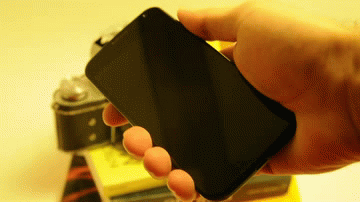
After two or three flicks, there’s a vibrate and then the camera interface launches. I thought this would be really awkward in practice and lead me to flick the Moto X across rooms or off buildings, but it turns out the camera activation gesture is easy to internalize after a few tries. The downside is that I suspect I have launched the camera with the Moto X in my pocket at least four times now, one time while riding the subway (where it took 10 quick pictures in the pocket of my shorts), and another time while walking around (it took 3 pictures), and a few other times I pulled my phone out of my pocket only to be greeted by the launched camera (it had been going for who knows how long eating battery). When that happens, your gallery will look something like this:
I’m not sure how during those occurrences the accelerometer data happened to look the same way to the sensor fusion intelligence as a camera flick gesture, but they definitely happened. I wouldn’t say it’s a big issue, but that at least two times I was surprised to come back to a few black photos in my gallery. I guess the upside is that you can turn it off, but I still keep it on, even with there having been a few false positives.
RGBC - One Clear Pixel
The Moto X camera system is definitely an interesting one. Digital camera sensors don’t sample color at each photosite, instead to detect color, you need a filter, or in this case a filter array, and then an algorithm to interpolate the color of each pixel from its neighbors. The Moto X is the first smartphone system I’m aware of to use a different color filter array from the traditional Bayer RGGB. Bayer has been the de-facto color filter array of choice for digital cameras essentially since their inception for a few reasons. It’s a 2x2 unit cell that goes RGGB, which works perfectly since human visual sensitivity peaks in the green. In addition the algorithm to interpolate the two other colors at each photosite, and the filter wavelengths themselves, have been perfected for over 20 years. The problem with using filters is of course that you lose light, and with smartphone pixel sizes getting smaller and sensitivity not going up as much, there’s been a lot of attention directed at alternative color filter arrays, either 2x2 or 4x4, with clear pixels of some kind to increase sensitivity in low light situations. Sony famously tried an RGBW (white, clear, RGBC) arrangement before bailing out and going back to Bayer, Aptina has another RC,CB subpixel pattern it believes is even better, and others have tried 4x4 grids as well. There are tradeoffs involved – sampling green less means less spatial resolution in that color channel, and thus introducing color artifacts which occur from the demosaic algorithm that tries to infer the other colors at the other sites.

Aptina's pattern comparison table is pretty close to the mark
The Moto X anyhow includes a CMOS sensor topped by a color filter array with a single clear pixel in the place of what would otherwise be a green pixel in Bayer land, and claims a 75 percent gain in sensitivity as a result. Motorola has long been an OmniVision customer, for about as long as I’ve tracked them. The Moto X continues that trend with a 10 MP OV10820 rear facing CMOS sensor, which is a variant of OV10810 that includes a clear pixel. That rear facing sensor includes 1.4µm pixels and thus ends up notably bigger than the 13 MP sensors with 1.1µm pixels with a format of 1/2.6". The sensor array is 16:9 aspect ratio, with an image size of 4320x2432, which sort of gives away its real design intention – a 4K (UHD) image sensor, though obviously the Moto X can’t shoot 4K video.
Atop the Moto X sensor is a relatively fast F/2.4 system with 4.5 mm focal length, which gives it around a 30mm (35mm effective equivalent) focal length. I still would love to see more phones come in around 35, but 30 is still a bit longer than the 28 and below I see starting to become more common to get the stack thinner.
The front facing camera is a Samsung S5K5B3G 1920x1080 CMOS image sensor, 1/4.5" in size, with 1.75µm pixels and frontside illumination.
An interesting thing to talk about is the consequence of using a CMOS sensor with a clear pixel 2x2 pattern alongside an SoC whose ISP is optimized for Bayer, and Bayer only. I’m not privy to exactly how much of Qualcomm’s ISP onboard MSM8960Pro isn’t fixed function, but either way Motorola either didn’t invest the engineering resources or the ISP simply can’t do anything other than Bayer, and thus needs an RG,BC to Bayer domain conversion step somewhere. For this, Omnivision includes an OV660 coprocessor, which does the conversion. I don’t have visibility into the entire imaging pipeline for the Moto X, but I would bet OV660 takes a lot of the ISP burden as a result.
So how does the Moto X actually fare as a camera? For this we turn to the normal combination of tests at a few locations, comparison images taken with multiple cameras at the same place, and in a lightbox of a scene and of test charts. As a reminder only locations 3,4,5 and 7 remain available at the smartphone camera sample bench location, that one effectively starts here.
Test Charts:
Test Scene:
Smartphone Bench:
Moto X Shooting Samples:
 |
| Moto X: 1/2700, ISO 160 |
 |
| Moto X: 1/2703, ISO 160 |
 |
| Moto X: 1/3448, ISO 160 |
 |
| Moto X: 1/2041, ISO 160 |
HDR Comparison:
 |
| Moto X: 1/3226, ISO 160 |
Quite honestly, performance seems to be very bimodal. In well lit scenes the Moto X is quite capable of making some surprisingly good photos, in fact I was initially surprised by how good some of the photos I took right out of the gate with the Moto X turned out. The clear pixel does however give you color artifacts if you start challenging it with patterns with lots of spatial detail, which I noticed with some of the first photos I took on the Moto X of a brick wall across from the hotel room I was working in.
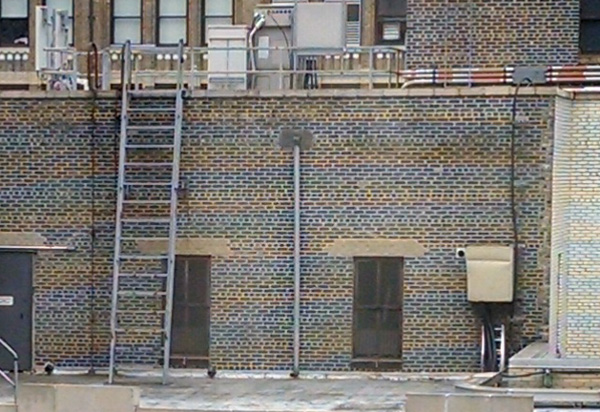 |
The clear pixel also definitely seems to have a spatial frequency tradeoff, which isn’t entirely surprising. The Moto X is capable of taking good photos outside in bright light, there’s just an occasional haziness, but that’s a common problem for phones these days as stray light becomes an increasingly big problem. Image saturation is also a bit lower than what I'm used to from phones, exacerbating that washed out look when compared side by side with other cameras. The one upside is that white balance in the controlled test scene seems to be much better, which is what leads me to suspect that OV660 is doing a lot of the ISP duties instead of 8960Pro.
 |
| Moto X: 1/15, ISO 3200 |
When I say the Moto X camera performance is bimodal, I really mean it. It seems to have a night mode that automatically kicks in after about 3 seconds and dramatically changes the camera tuning on the device. Integration time is longer, but also the demosaic algorithm seems to change as well, to something which ostensibly uses the luminance channel from the clear pixel a lot differently than it gets used in the other mode. When this happens there’s also honestly a lot of splotchiness that appears from noise reduction algorithms running. Motorola will send ISO very high, up to 8000 on the Moto X, which helps it keep exposures from running above what seems to be the imposed limit of 1/15 seconds. It’s possible to get the shot, and there is a gain in sensitivity, but detail really suffers at those configurations. From an academic perspective I'm intrigued by the Moto X camera just because of the clear pixel.
Video Analysis
On the video side, the Moto X records in 1080p30 by default, again there aren't any options for changing bitrate or size, it's just always maximum, which I have no issues with. The encode settings end up being 17 Mbps H.264 High profile with 1 reference frame for video at a solid 30 FPS with no dropped frames, and 128 kbps stereo audio.
The slow motion video mode I was really hoping would be 1080p60 and was inititally told it would be. This obviously was a case of someone misspeaking since it actually is a relatively mundane (read: standard) 720p60 which gets encoded at 720p15. If you speed playback up 4x, you'll get the fluid 60 FPS look I'd actually prefer to an artificial slow motion mode that seems to be popular for Android handsets. Video encode is H.264 High profile at 5 Mbps
I've done the usual thing and uploaded a zipped copy of the videos I took on the Moto X to our server for your viewing without the annoying YouTube transcode and quality loss, in addition to YouTube for quick analysis. Video on the Moto X is smooth and doesn't drop frames or stutter, and there aren't many visible compression artifacts, which is excellent. Sharpness inside the video is ok but it still seems like it could be higher, which is surprising considering the sensor's 4K design. I suspect that Motorola is doing a subsample of the sensor in order to get video output that the SoC can handle, rather than downscaling the 4K native output that the sensor is capable of.


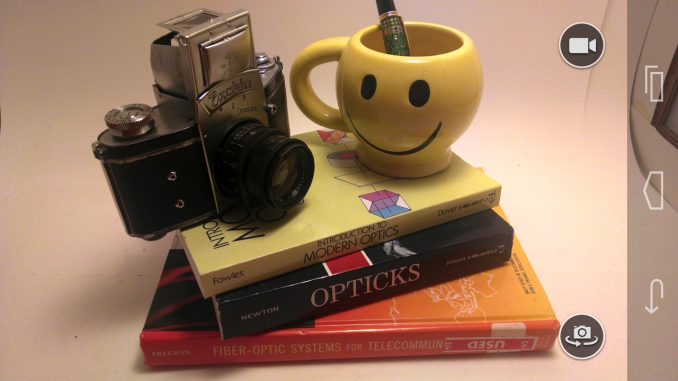
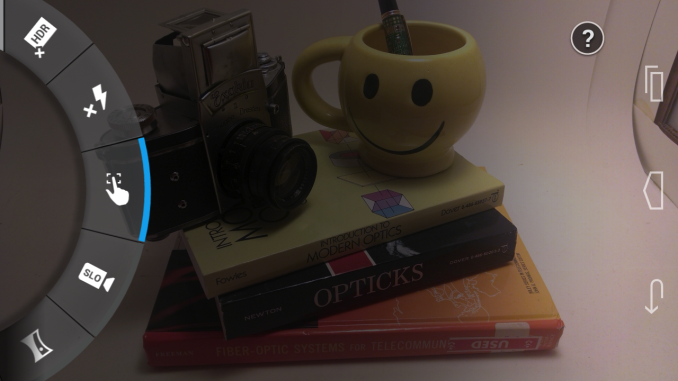
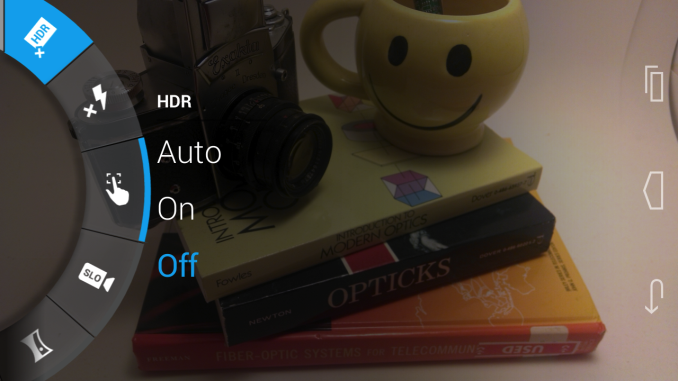

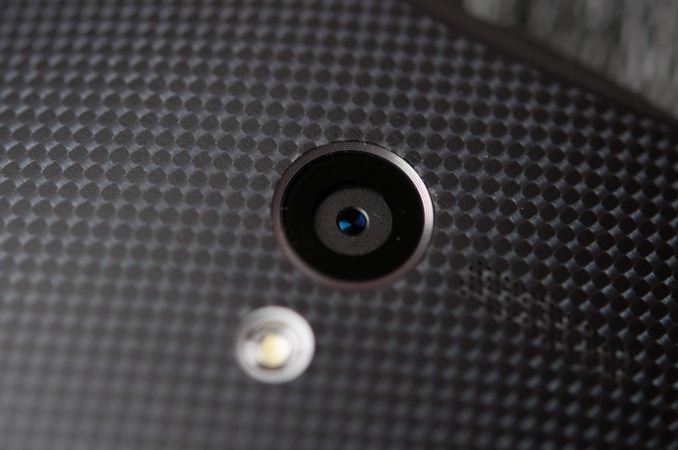










































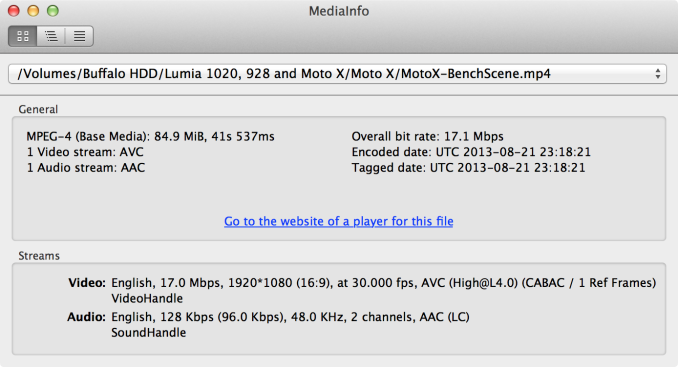








105 Comments
View All Comments
smitty123 - Monday, August 26, 2013 - link
" You have to also be close by, Moto X isn’t going to turn on when you’re across a big room, for example. In addition I’ve noticed that for some reason there are some odd false positives."i don't like to feel like my spied on.
So to me it just sounds like we have a new thing to test: the distance at which the phone can hear us.
Not hear the magic phrase, just how far from us it can still hear us with its 3 mics. forget the "it can't understand us" i'm not testing if it can recognize words, i'm just not comfortable knowing if it can record conversations that a human, nsa for example, can understand. with obama going for the warantless conversation recording, let's just say, this isn't a phone i'd want near me.
That old big brother spying thing is here, i think in the interest of privacy, we need to know these things before buying the phone.
i for one will never get an xbox one just for that reason.
good luck but i'm going back to good old rotary phones lol
flyingpants1 - Wednesday, September 18, 2013 - link
All phones can do that, genius.AnnonymousCoward - Tuesday, August 27, 2013 - link
Does the UI have lag between Android menu screens? Is the touch-screen at least as responsive as every Iphone to come out?I'm guessing there's still plenty of UI lag. In the future, UI's will be instant.
eallan - Tuesday, August 27, 2013 - link
It's pretty responsive, I've had some hiccups and frame rate drops though.Honest Accounting - Monday, September 16, 2013 - link
In the general UI or specific applications?Krysto - Tuesday, August 27, 2013 - link
Maybe it got offset by the last-gen AMOLED tech. Here's the thing. If you're going to argue for efficiency, then don't just use an "old panel". Obviously that won't help. You need to use the latest technologies, the most efficient ones, and THEN lower the resolution and the clock speed of the CPU and GPU.So let's say the latest AMOLED is 2x more efficient than the n-1 before it, at the same resolution. But at 1080p (2x more pixels) it uses just as much power compared to the 720p one. Then I want the latest AMOLED with 720p, to benefit from that improvement in efficiency. If I use the old one with 720p, or the new one with 1080p, then I won't see any improvement in battery life.
Same for the CPU and GPU. Let's say Motorola wanted to hit the performance target of S4 Pro, in both CPU and GPU. Great. But to gain extra efficiency, it would've been ideal to use the S800's CPU at 1.5/1.7 Ghz (instead of 2.3 Ghz), and Adreno 330 at half the clock speed (to match Adreno 320's performance).
That's how you get the extra efficiency. We don't really see new phones that are much better in power consumption than last year's models, because the OEM's keep pushing for performance or resolution or whatever, which completely cancels out whatever efficiency gains they might've had.
But this is our fault, too. Because we keep caring about benchmarks and who's e-penis is bigger, to the point where the OEM's have the incentive to cheat on these benchmarks, to get good PR from it.
If we really want to see better battery life, then act like you don't care about performance anymore (because it has gotten good enough anyway), and ask for 2-day battery life (then heavy users might finally get a full day).
Impulses - Tuesday, August 27, 2013 - link
The whole efficiency line on Motorla's part is probably half marketing spin anyway, I'm sure cost and logistics played as large a role into the component selection as efficiency, even features (the active display stuff would've been impossible w/more common LCD displays, etc). At the end of the day, the only phones that have made monumental battery life strides have been their MAXX editions, by just packing a much larger battery... It seems current gen phones often catch up to last gen MAXX phones in one or two tests tho.If they were really trying to go for battery life above all they'd not only sacrifice some performance but some device thickness, and introduce a phone w/a MAXX-like battery as the only SKU w/no smaller battery model below it. I'm surprised more OEMs aren't putting out slightly thicker phones at times w/3,000mAh batteries like Moto, like not even one OEM has...
michaelljones - Tuesday, August 27, 2013 - link
Brian, Anand,I know I'm commenting awfully low in this list to get seen, but I'd like to see a little more love for Windows phone in some of your comparison graphs. Throw in at least a token Lumia please (or more if you like!)?
I'm a happy Windows Phone user (like many I think), but I have no way to quantitatively compare my Lumia 928 to any of the other handsets. With cameras that kick ass, I can't see how they aren't a comparable discussion.
teiglin - Tuesday, August 27, 2013 - link
Two Lumias feature prominently in the camera section, and more are in the full gallery of camera comparison shots. I mean, yeah, Brian clearly knows that Nokia kicks everyone else's cameras in the nuts, and it shows.Beyond that, where do you want to see the Lumias? I don't think Brian ever got a working Windows Phone battery life test because of screen timeout issues (not to mention the absence of precision brightness controls makes it hard to compare to controlled 200 nit settings), so that leaves javascript benchmarks and display quality. I guess those would be nice to see in the appropriate charts.
michaelljones - Tuesday, August 27, 2013 - link
No mention on the screen page of any other Lumia devices and their types or quality of screens, only a host of Androids and a Apple. No CALMAN data.No speaker phone comparisons. The 928 Nokia crows all about the speaker phone for crying out loud. I want to know if it's really that good or if it really sucks that bad comparatively speaking.
No call time and battery tests. The call time is an open freakin phone call for crying out loud. I could have done that on my StarTac in 1997. Also no charge time comparison, despite the fact that there are a half dozen apps in the Windows Store that will measure this.
I believe several of the tests used in the CPU test are browser tests, and run just fine on a Lumia.
Last I knew GFXBench ran on Windows Phone, yet it's nowhere to be seen in the graphs. (maybe it's pathetic, but at least show it). http://gfxbench.com/result.jsp?site=dx
The camera section DOES have some pics from the Lumias, but fails to mention anything about them in the discussion, nor mention that Brian has them and that reviews are coming, etc. etc. other than an oblique reference to how he likes having access to the controls of the camera ala Lumia 1020. (and no mention of how the 1020 mops everything in the photo comparison as has been widely crowed with every other smart ass smart phone before this i.e. iPhone 5). Also no mention if those 1020 pictures are full 45MP or cropped ones.
I'm not asking for a chart that takes away from the phone in question by any means. I'm just asking for a fair and balanced view of the current Windows Phone offering(s) comparatively speaking. WP has it's own benefits and it's own downfalls, and I'd like to see them compared to others in an honest way.
See http://www.notebookcheck.com/Test-Nokia-Lumia-925-... as an example (granted it's in German, but the charts prove my point that these comparos could be a bit more balanced and not 9 Android phones against 1 iPhone and NO Windows Phone)